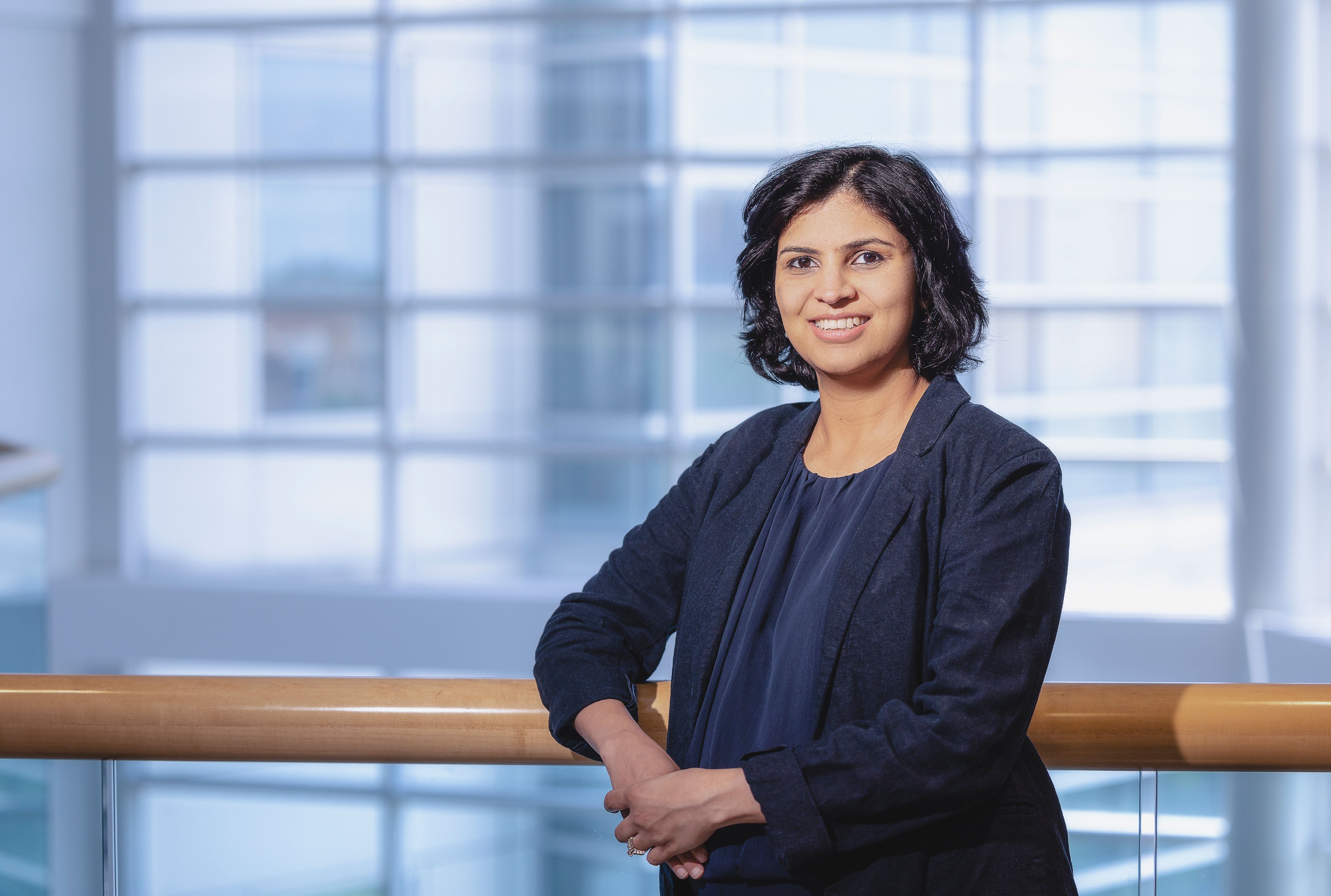lens
Mapping Brain Cancer
Pallavi Tiwari is developing imaging technology to customize the diagnosis and treatments of tumors
 Photo: Matt Shiffler
Photo: Matt ShifflerPallavi Tiwari has gained international recognition for her research. She was 32 weeks pregnant at the time of this photo.
A patient diagnosed with the aggressive brain tumor glioblastoma typically has only 15 months to live. The grim prognosis can lead to multiple surgeries to remove and then test suspected tumors. But what if clinicians could determine whether a suspicious tumor is benign or malignant without putting patients under the knife?
Pallavi Tiwari, PhD, leads a team developing a diagnostic method to do just that.
Tiwari, an assistant professor of biomedical engineering and director of the Brain Image Computing Laboratory at Case Western Reserve, is using artificial intelligence to analyze MRI scans and ferret out minuscule variations that distinguish recurring tumors from scars formed by prior surgeries, chemotherapy or radiation that can resemble cancer.
The first clinical trial to assess the diagnostic accuracy is expected to begin in early 2022.
For her innovative research, Tiwari won a 2020 Johnson & Johnson Women STEM2D (science, technology, engineering, math, manufacturing and design) Scholars Award, which includes financial support and mentorship, and is co-leading a team that received a $1.15 million grant last year from the National Cancer Institute.
She’s gained international recognition for her research as well as her work to increase the ranks of women in STEM and support those already there.
In May, Forbes published a story about her, headlined “How One Scientist Fights Brain Tumors Every Day.” And in 2015, the Government of India included Tiwari—a native of Indore, India, who moved to the United States for advanced degrees—to its list of 100 Women Achievers of India.
Think recently talked to Tiwari about her work.
What’s the plan for testing the technology with patients?
The clinical trial is slated to be at Cleveland Clinic and, initially, we are hoping to recruit 20 patients.
The idea is to create [personalized] heat maps almost analogous to the hotspots on the [Doppler] weather map. In this case, a hotspot means cancer. We call them GPS navigation maps because they allow neurosurgeons to navigate where to do the biopsy. Because they are quantitative, they are more precise than just subjectively taking biopsies and getting false positives and false negatives.
We’ve already done extensive work, and we’re getting close to 90% accuracy [in predicting which lesions are likely to be cancerous].
If we can show that [our non-invasive technology is] comparable to biopsies, that’s really where the value of our work comes into play.
What comes next?We want to expand to a larger clinical trial and perhaps bring in other institutions as well. We have to be able to demonstrate that we are getting sufficient accuracy [in distinguishing cancerous tumors from benign lesions]. The next step would be to seek FDA [U.S. Food and Drug Administration] and other regulatory approvals and then figure out how we can get it into clinical use. Even if we can extend [patients’ survival] by three or four months, that’s massive improvement.
Why is advocating for women in STEM a priority?Especially where I come from, women doing engineering or science is not something that’s very common. I’ve seen it up close, women as good as I was [who] didn’t have the right resources to do all the things that they wanted to do.
I serve in leadership capacities at different international societies to help women navigate their research and professional lives. I’ve [also] given lectures to girls in high school, just to let them know how cool it is to do science.





